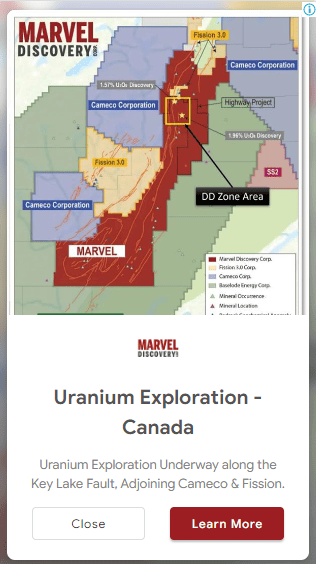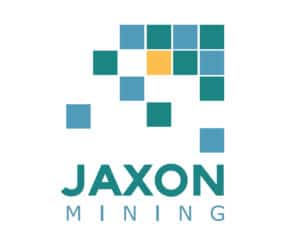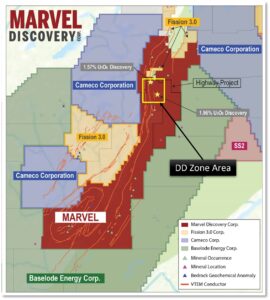2022-08-09 05:06:31
Vancouver, British Columbia–(Newsfile Corp. – August 9, 2022) – Lode Metals Corp. (CSE: LODE) (“Lode” or the “Company”) is pleased to provide an update confirming high grade mineralization at the Cracker Creek Project, near Baker City, Oregon (the “Cracker Creek Project”).
Key Highlights:
- Underexplored Project: Geological and structural mapping, together with rock and soil geochemical sampling are ongoing to update mapping conducted in the early 1980’s by the Oregon Department of Geology and Minerals (DOGAMI) and mapping and sampling by AMAX. Logging roads constructed after the early mapping have exposed several unmapped quartz veins, an important indicator of mineralization in the Cracker Creek system. The Lode Metals geology team have identified four target types at the Cracker Creek project, including: subparallel, cross-cutting, on-strike, and down-dip extensions.
- Assays Pending from Soil and Rock Samples: Initial samples have been submitted for geochemical analysis to a conventional lab. Additionally, Lode Metals is utilizing x-ray fluorescence spectrometer (“pXRF”) geochemistry to augment the conventional assays, while conducting the rock and soil sampling program. This approach enables the Company to act on results from the initial soil grid and initiate grid expansion immediately, rather than wait more than 6 weeks for results from a conventional lab.
- Mineralization Encountered: An initial pilot study of one of the North Pole mine dumps using pXRF has identified significant, anomalous gold mineralization (30, 99, 238 & 1,182 ppm Au) along with a strongly anomalous suite of trace metals (+/- Ag, As, Te and Sb). Lab results are pending. These initial pXRF results compare favorably with historic high-grade mineralization reported from the North Pole Mine to average 26.316 opt (818.5 g/t) gold.
- Drill Ready Targets Are Permitted: The Company has identified several, near surface structural intersection targets that splay from the main Cracker Creek structure. These targets are drill ready and permitted by DOGAMI. Current exploration work is advancing targeting on-strike, down-dip, and subparallel targets.
Ken Tullar, CEO, stated: “The Cracker Creek exploration model is rapidly taking shape and will receive the benefit of the ongoing geologic and structural mapping, adding to, refining and improving the drill ready targets that we already have in our portfolio. The use of pXRF is an exciting, real-time tool that has already served to discriminate mineralization at our North Pole target. We look forward to the results of more pXRF outcrop interrogation and focusing our soil grid extensions as data becomes available.”
Dimensions of Mineralization:
- The mineralized Cracker Creek structure was mined selectively over 3.5 km along strike and to a depth of 1 km down dip. Historic production for the mines that Lode Metals controls, Columbia, E & E and North Pole focused on the main Cracker Creek vein – see Figure 1 for historic mine locations. Reportedly secondary splays from the main Cracker Creek vein were recognized but never mined.
- Historic records indicate +400,000 ounces of gold was produced from the combined three mine mills (Columbia, E & E, and North Pole). The North Pole records indicate that the average mill grade was 0.482 opt (15.0 g/t) gold that included some direct ship to smelter ore that averaged 26.316 opt (818.5 g/t) gold, and combined, the overall grade was 0.630 opt (19.6 g/t) gold.
- The Cracker Creek project historic resource of +400,000 ounces of gold has an average grade of 0.316 opt (9.8 g/t) gold. Lode Metals believes targeting structural splays and intersections will encounter higher grades in drilling.
- Previous miners and explorationists noted that the higher-grade mineralization had a rake of 18 degrees to the southwest and an even steeper rake to the southeast. Therefore, it is critical to drill-oriented core to unravel these very important, geological, and structurally controlled questions. Lode Metals has State of Oregon issued drill permits to begin drilling in hand.
 Figure 1: Cracker Creek Property Position Map and Location of Historic North Pole Mine.
Figure 1: Cracker Creek Property Position Map and Location of Historic North Pole Mine.
Models
New geology surface mapping data will be incorporated into an updated geological and structural model for the entire, consolidated project. Lode Metals has already invested time and resources into integrating more than US$6M in legacy data generated by previous explorers from the late 1800’s through the 1990’s. This includes digitizing the underground mine workings, underground channel samples and extensive, and localized core drilling. These maps and sampling have instructed the vein and structural model and have led to the spatial recognition of previously known vein intersections that were never explored.
Target Generation
System Characterization: The Cracker Creek property is a structurally controlled, narrow, high-grade, orogenic gold deposit with the Mother Lode District, California as an analog. Gold bearing orogenic systems have been known to persist for several kilometers down dip. To date, the Cracker Creek system has only been historically mined to a depth of 1km and remains unexplored at depth and along strike.
The focus for the geological mapping and exploration is to refine and improve the lithological and structural model to better characterize favorable mineralized areas, associated structural intersections and identify trends for additional outcropping quartz veins. Recognized targets already include down-dip from historically mined mineralization along the Cracker Creek lode, on-strike, structural intersections, and subparallel veins that were either historically mined or simply unexplored.
The soil surveys will focus on gold and silver as well as pathfinder elements known to be associated with orogenic-related, high-grade gold mineralization hosted in Elkhorn Argillite, a metasedimentary suite of rocks. Initially, a portable x-ray fluorescence spectrometer (pXRF) is being used in the field to measure elemental concentrations from prepared samples. Following this field test, these samples have been sent to the lab for full multi-element, low-detection geochemical analyses. Comparisons of field measurements to lab analyses are progressing, helping to build confidence in the exploration team that the pXRF can and will be a more cost-effective and timely solution to soil geochemical analyses.
Qualified Person
The technical content of this news release has been reviewed and approved by Kenneth Tullar, P. Geo., the CEO of the Company, and a qualified person as defined by National Instrument 43-101.
About Lode Metals Corp.
Lode Metals is a gold exploration company focused on applying modern exploration techniques integrated with current geological models to the previous producing, high-grade Cracker Creek property located in northeastern Oregon, United States. The Cracker Creek property consolidates the contiguous, high-grade, past-producing Columbia, Eureka, Excelsior and North Pole Mines, collectively the most prolific gold producers in Oregon between 1891 and 1934.
Ken Tullar
President & CEO, Director
This email address is being protected from spambots. You need JavaScript enabled to view it.
www.lodemetals.com
Footnotes
The historical mineral resources discussed herein were calculated prior to the implementation of the standards set forth in NI 43-101 and current CIM standards for mineral resource estimation (as defined by the CIM Definition Standard on Mineral Resources and Ore Reserves dated May 10, 2014). The reader is cautioned not to treat them, or any part of them, as current mineral resources or reserves. The estimates do not classify the resource as either a measured, indicated or inferred resource and, accordingly, readers should not assume it satisfies the requirements of any of such classifications. There is insufficient information available to properly assess the data quality, estimation parameters and standards by which the estimates were categorized. An independent Qualified Person (‘QP’) has not done sufficient work to classify the estimate discussed as current mineral resources or reserves and therefore the estimate should be treated as historical in nature and not current mineral resources or mineral reserves. The historical resources have been included simply to demonstrate the mineral potential of the projects. A thorough review of all historical data performed by a QP, along with additional exploration work to confirm results, would be required in order to produce a current mineral resource estimate for all projects.
Cautionary Note Regarding Forward-Looking Statements
Neither the Canadian Securities Exchange nor its Regulation Services Provider accepts responsibility for the adequacy or accuracy of this release.
This news release contains certain statements that may be deemed “forward-looking statements” with respect to the Company within the meaning of applicable securities laws. Forward-looking statements are statements that are not historical facts and are generally, but not always, identified by the words “expects”, “plans”, “anticipates”, “believes”, “intends”, “estimates”, “projects”, “potential”, “indicates”, “opportunity”, “possible” and similar expressions, or that events or conditions “will”, “would”, “may”, “could” or “should” occur. Although Lode Metals Corp. believes the expectations expressed in such forward-looking statements are based on reasonable assumptions, such statements are not guarantees of future performance, are subject to risks and uncertainties, and actual results or realities may differ materially from those in the forward-looking statements. Such material risks and uncertainties include, but are not limited to, the Company’s ability to raise sufficient capital to fund its obligations under its property agreements going forward, to maintain its mineral tenures and concessions in good standing, to explore and develop its projects, to repay its debt and for general working capital purposes; changes in economic conditions or financial markets; the inherent hazards associates with mineral exploration and mining operations, future prices of gold, copper and other metals, changes in general economic conditions, accuracy of mineral resource and reserve estimates, the potential for new discoveries, the ability of the Company to obtain the necessary permits and consents required to explore, drill and develop the projects and if obtained, to obtain such permits and consents in a timely fashion relative to the Company’s plans and business objectives for the projects; the general ability of the Company to monetize its mineral resources; and changes in environmental and other laws or regulations that could have an impact on the Company’s operations, compliance with environmental laws and regulations, dependence on key management personnel and general competition in the mining industry. Forward-looking statements are based on the reasonable beliefs, estimates and opinions of the Company’s management on the date the statements are made. Except as required by law, the Company undertakes no obligation to update these forward-looking statements in the event that management’s beliefs, estimates or opinions, or other factors, should change.








